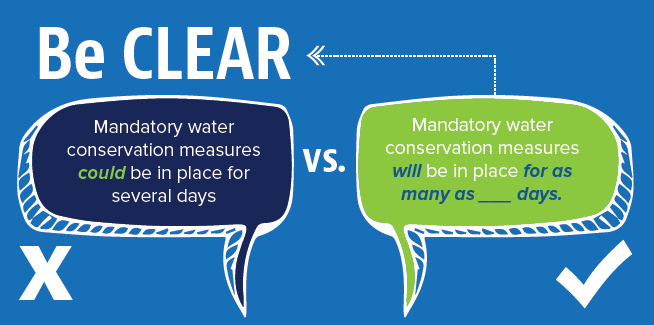So, you’ve taken the plunge and your public entity now has a social media presence. Everything is going great – you’re getting lots of followers on Twitter or “likes” on Facebook. Then something bad happens. Maybe the City experiences a water emergency, a street flooding event occurs after a big storm, or the municipal pool has to be closed temporarily because of an accident.
You’re used to issuing news releases when events like this happen, but how do you handle it on social media? Even scarier, what do you do if people start posting and tweeting complaints and misinformation about the unfortunate incident?
Unfortunately, rumors and misinformation can spread just as quickly as – if not more quickly than – legitimate news. Just a few “tweets” or “shares” can kick the rumor mill into high gear, which can snowball into calls and emails from concerned citizens.
Here are six steps combat misinformation online:
- Monitor Your Accounts: It’s not enough to just set up a Facebook page or Twitter account. At least one person should be designated to check the utility’s accounts on a daily basis. The same person should be responsible for posting information and responding to posts. Employees who have their own social media accounts should also be encouraged to report misinformation or complaints that they spot online.
- Get Ready: Identify worst case scenarios that could negatively affect your agency – water contamination, responses to rate changes, watermain breaks, flooding or storm damage, etc. Create general guidelines for how the utility will respond.
- #HotTopics: Be aware of what is going on in the news, your community, and your business. Hashtags are an easy way to search for specific topics on Facebook, Twitter, and Instagram. For instance, after an oil spill in Glendive, MT, many people used #OilSpill in their Facebook posts and tweets. Flood fighters in Fargo, ND have shared photos and information about flood conditions with #FargoFlood. Similarly, #MSPstorm was used after a powerful wind storm in Minneapolis. You can search specific hashtags on individual social media sites or use a website like TagBoard.com to simultaneously search multiple social media sites.
- Don’t Delay: During emergencies such as the lead water contamination situation in Flint, MI, uncertainty can spur concerned citizens to find other sources of information about the situation. The longer an organization waits to respond, an increasing number of rumors will fill the gaps left by official channels of information such as your social media accounts.
- Be Clear: Instead of saying “Mandatory water conservation measures could be in place for several days,” it’s better to say, “Mandatory water conservation measures will be in place for as many as ___ days. Until further notice, please limit water usage to essential use only.” The second message conveys a timeframe that customers can expect to be impacted along with specific instructions.
- Consider Visuals: Be open to using infographics, photos, and videos to share information. An infographic could be the perfect way to explain what “essential use” means when water conservation is necessary. And simple cell phone photos or videos can be used to quickly clear up misinformation. As an example, let’s say there are complaints that the public works department isn’t fixing potholes in a timely manner. Posting or tweeting a photo of crews working on the problem can immediately convey the truth.

